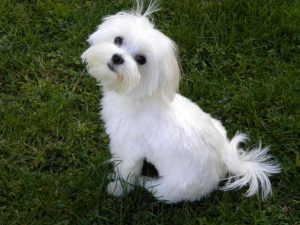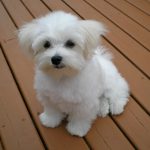 The Maltese Terrier
The Maltese Terrier
The Maltese is a tiny companion dog prized for its friendly, playful temperament and its magnificent coat. As its name suggests, this little dog is native to the Isle of Malta in the Mediterranean, though some historians believe that its ancestors were introduced to the island by the ancient Phoenicians. It is certainly one of the oldest breeds around. Some dog fanciers place its development as far back as 500 BC.
Sizes
The Maltese is what used to be called a toy dog, and grows from 8 to 10 inches high at the shoulder and should weigh no more than 7 pounds. Boys are a bit larger than girls. There is no such thing as a “teacup” Maltese. Dogs that weigh less than 4 pounds when they are grown have something wrong with them genetically and are generally not healthy.
Colors
Though this little dog used to come in a variety of colors, today the color of the coat is pure white, though some have a tinge of tan or lemon. The coat contrasts beautifully with the dog’s huge, black, black-rimmed eyes and its black nose.
Temperament
The Maltese are a delightful, energetic, confident creature who loves to be with its people and with people in general. It does not like to be left alone and if it is alone it will bark, and tear up the furniture. The instinct of many people is to spoil the dog a little bit, which can make it intolerant when another pet or even a baby is introduced into the household. It is an intelligent dog and small enough to be perfectly comfortable in an apartment. However, it is probably best not to have this pooch in a house with young children, because it is so small that it risks getting stepped on or mauled.
Health
Like a lot of little dogs, the Maltese are long-lived. It usually lives between 12 and 14 years but can probably live longer with excellent loving care. They can be a little challenging to house train, so experts recommend crate training. This is where the dog is placed in their crate. Once there, they resist the urge to defecate or urinate, as they see the crate as their personal den. When the dog is taken out of the crate they are free to do their business on newspaper or outside instead of anywhere else in the house. The owner needs to take the dog out of the crate fairly regularly of course because no dog can hold it forever.
Though the dog’s coat looks luxurious, it doesn’t have an undercoat. This makes it susceptible to chills when it is in cold, damp places. It also doesn’t like places that are too hot. A dog whose fur is allowed to grow long should not be in the sun for a long time because the places where the fur has been combed and the skin exposed can be sunburnt.
The coat must be brushed daily, especially if it has been allowed to grow long. It’s also a good idea to wipe the eyes, clean the dog’s beard after it eats, and clean the ears. All of these tasks should be done gently.
This little dog may also be a finicky eater because its digestive system is a bit dicey. Some may have problems with their teeth that makes eating uncomfortable. In that case, the dog should be taken to the vet to see what the problem is.
Additional Facts
The Maltese are a type of terrier, and a long long time ago they were bred to hunt and kill rats. Later on, it was found to be the nearly perfect companion dog. Ladies in upper-crust Greek and Roman families used to tuck these dogs in the sleeves of their robes, carry them around, and treat them like babies. Even Aristotle wrote of this dog, and the Greeks built tombs for them. People in some cultures felt that the dog could cure diseases, so they would put one in bed next to a sick person. This gave the pooch the soubriquet of “The Comforter.”
People’s love of this terrier nearly did it in, for there were attempts to make it even littler than it was. By the 19th century, the English developed the breed to be pretty much like what it is now, and it has been a wildly popular breed ever since.








